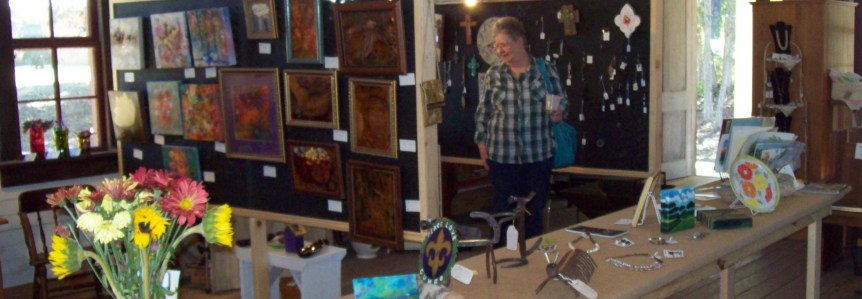Moving Forward Archive

Culture Important to Parish Economy
The St. Landry Parish tourism commission promotes the idea that this is a place where “we live our culture.” It is also a place where our cultural environment is a lively and growing source of jobs, income and taxes.
“We often think of our music, arts, food, and history as something that attracts other people to St. Landry, that these are things that others come to see or experience,” according to Bill Rodier, economic development director for St. Landry. “But we have begun to recognize that our cultural economy is an important part of our our overall economic base, and one that we are learning to cultivate and promote.”
According to one recent study, Louisiana’s “culture sector” generates more jobs than the tourist industry, and employment growth is nearly three times the overall statewide growth rate.
That study, done for the Louisiana Office of Culture, Recreation, and Tourism, defines Louisiana’s cultural economy as:” the people, enterprises, and communities that transform cultural skills, knowledge, and ideas into economically productive goods, services, and places,” and notes that “in addition to the core cultural segments of design, entertainment, literary arts and humanities, and visual arts, Louisiana’s unique culture is reflected by the inclusion of culinary arts and preservation.”
“St. Landry as an abundance of each of those things,” Rodier notes, ”and we have begun to understand how to meld these cultural assets
into a significant industry, being careful that we do not commercialize them to the extent that they lose the character that makes them important.”
In St. Landry, he notes, a good bit of that promotion comes through a cultural district program created by the state in 2008 to support artists, artisans, and galleries and other outlets for their work. Seventy-eight districts have been created statewide since the inception of the program, and six of them are in St. Landry Parish–the most anywhere outside of the greater New Orleans area, according to Gaye Hamilton, director of the cultural district program for the state.
Districts have been created in Arnaudville, Eunice, Grand Coteau, Opelousas, Sunset, and Washington. The districts provide tax incentives for renovation and restoration of historic and culturally important homes and buildings, and provide for tax-free sales of original art work.
“The program’s intent to spark revitalization through tax incentives designed to increase business opportunities, markets for cultural products, artistic production, renovation of older buildings, increased cultural activity, and a greater sense of community is being realized statewide, and in important ways in St. Landry Parish,” Hamilton said.
The National Endowment for the Arts has long-recognized the cultural vitality that exists in rural areas like Arnaudville and we are eager to see the continued development of this project. Not only will the French Immersion Center have a positive economic impact on the area, but it will also be a cultural asset unlike any other in the US.
NEA Director of Design Programs, Jason Schupbach
In Arnaudville, the Louisiana Cultural Economy Foundation has announced completion of a business plan for a French Immersion Center in the old St. Luke’s Hospital building that closed its doors in 1990.This will be the only center of its kind in the United States.
The business plan is the first step in the Cultural Master Plan for the region, which was facilitated by the LCEF with a grant from the National Endowment for the Arts and contributions from St. Landry and St. Martin Parish Governments.
“The National Endowment for the Arts has long-recognized the cultural vitality that exists in rural areas like Arnaudville and we are eager to see the continued development of this project. Not only will the French Immersion Center have a positive economic impact on the area, but it will also be a cultural asset unlike any other in the US,” says NEA Director of Design Programs Jason Schupbach in a release announcing the plan’s completion.
Rodier notes that the cultural economy is largely made up of small businesses and that it enjoys a high degree of self-employment. The study done for the state suggests that this may
point to new ways to create and maintain jobs in other sectors of the economy.
“There is much discussion of the form that cultural work takes,” according to the study. It is “project-based, independent, highly fluid, and depending on networks of personal and professional relationships [and may be] a harbinger of future work modes and method of organization. The cultural industries will be leading the way and creating models of work that offer important lessons for more traditional industries.”
“I feel strongly that even though it is not a part of traditional economic development, the cultural economy is an important asset in St. Landry Parish,” Rodier said. “Our unique culture is a natural resource that, with proper stewardship, will always be with us.”
The statewide study agrees: “Authentic local culture cannot be outsourced. … It is [the one area] most likely to create jobs that will not eventually be lost to lower cost locations. Furthermore, because its production is so localized, it has a ripple effect on adjacent industries like tourism that benefit from people coming to Louisiana to experience the product firsthand.”
Opelousas, LA 5367I





